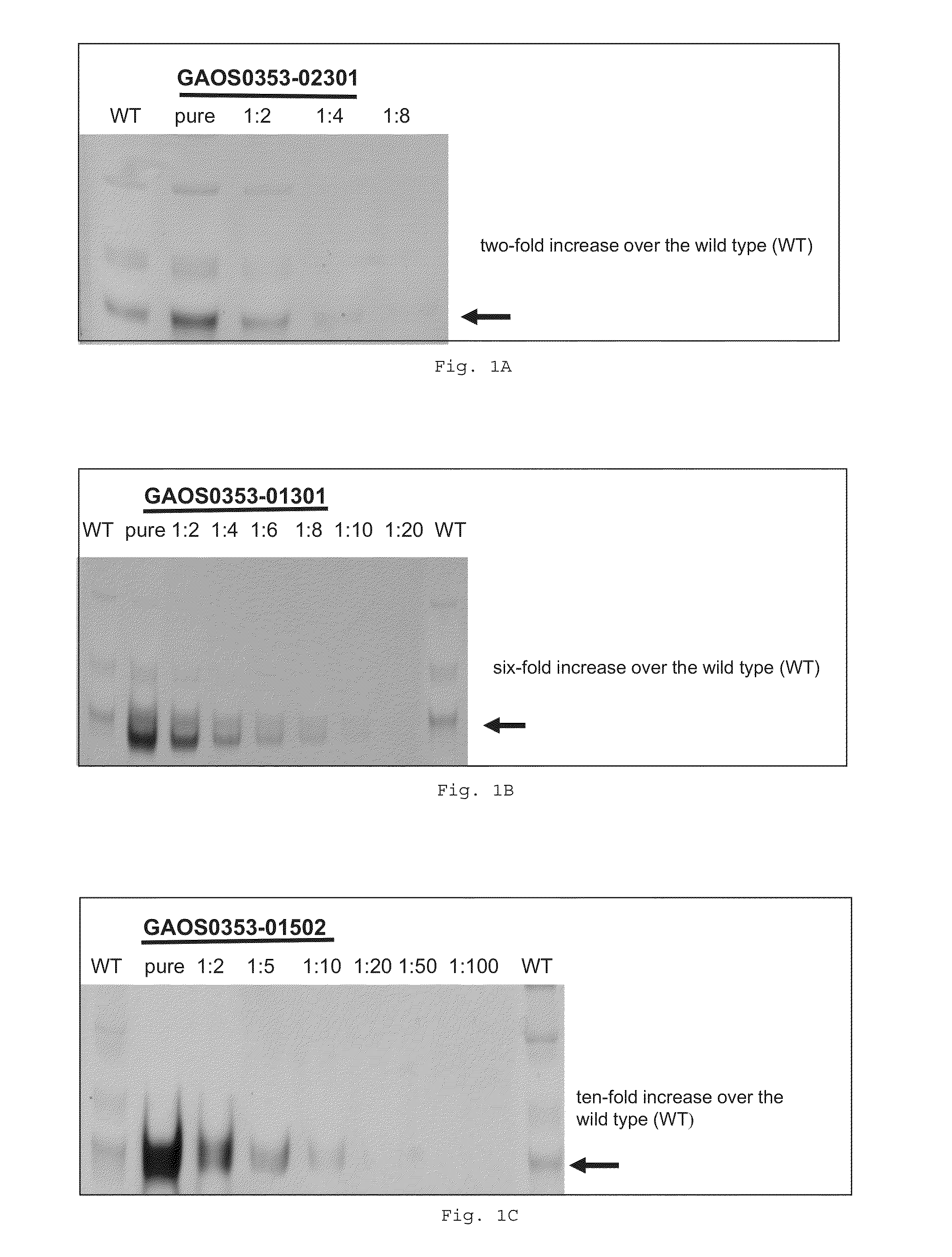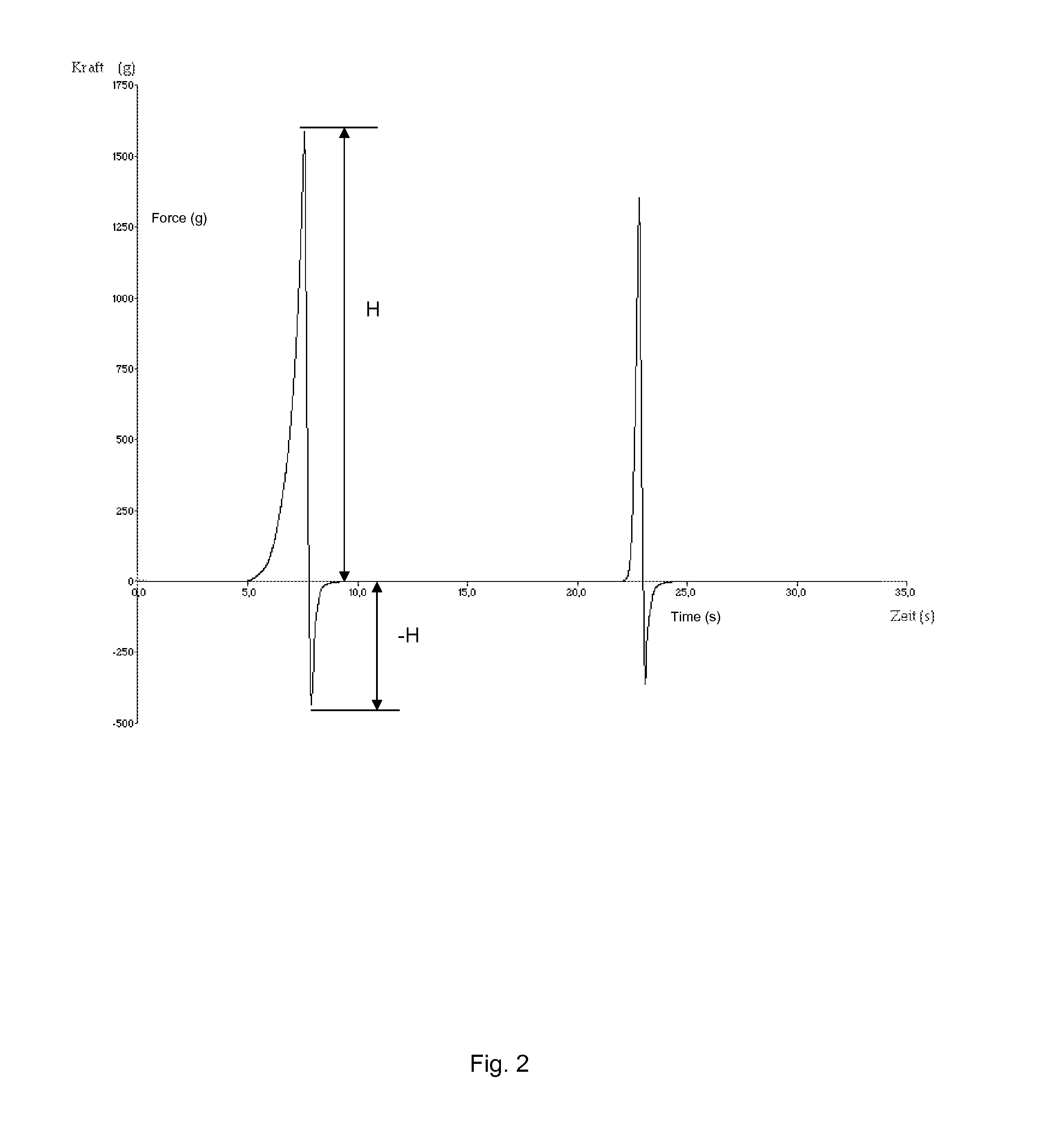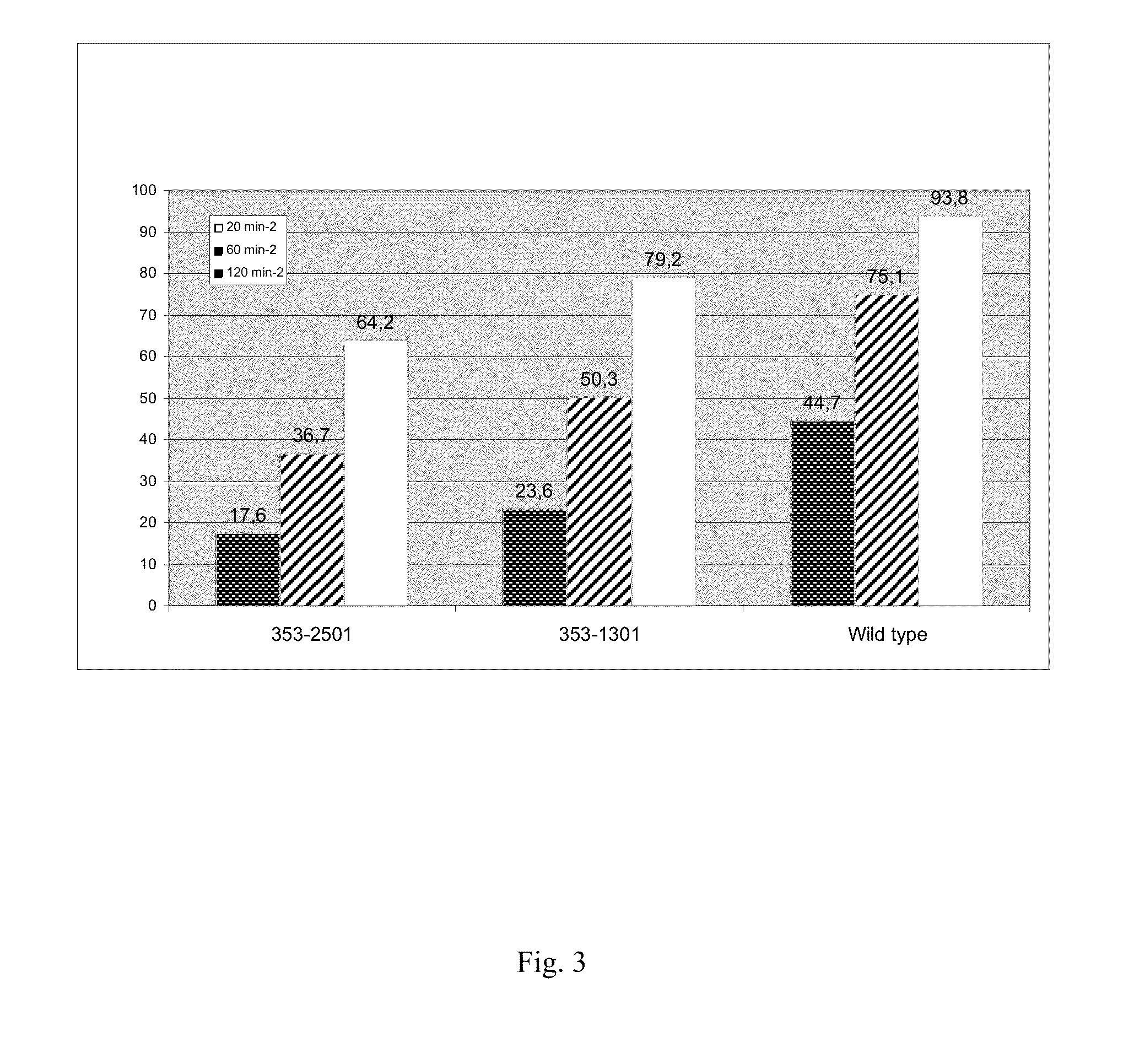Overexpression of starch synthase in plants
a starch synthase and plant technology, applied in the field of overexpression of starch synthase in plants, can solve the problems of inability to influence the content of covalently bonded starch phosphate in plants, high complex mixture, etc., and achieve the effect of increasing the activity of a soluble starch synthase, and increasing the activity of ssii proteins
- Summary
- Abstract
- Description
- Claims
- Application Information
AI Technical Summary
Benefits of technology
Problems solved by technology
Method used
Image
Examples
example 1
Transformation Vector for Expressing a Wheat Starch Synthase IIa in Rice
[0246]The rice transformation vector IR103-123 (described in WO 05 / 030941) and the plasmid CF31-191 (described in WO 97 / 45545 under the name pTaSS1) were used. The rice transformation vector IR103-123 serves for the endosperm-specific expression of the target gene by means of the globulin promoter from rice. In a first step a), the vector IR103-123 is linearized using the restriction enzymes EcoRV and XhoI. The plasmid CF31-191 contains the cDNA of a starch synthase II (SSII) from wheat (Triticum aestivum). In a second step b), the cDNA of the SSII is excised from the plasmid CF31-191 using the restriction enzymes EcI136II and XhoI. Ligation of the vector IR103-123 which had been linearized in step a) and the fragment, obtained in step b), of plasmid CF 31-191 gives the vector AH32-191.
example 2
Generation of Genetically Modified Rice Plants with an Increased SSII Activity
[0247]To generate genetically modified plants with an increased starch synthase II (SSII) activity, the T-DNA of the plasmid AH32-191 was transferred into rice plants with the aid of agrobacteria as described by Ishida et al. (1996, Nature Biotechnology 14 (6): 745-750). The increase of the SSII activity is determined by means of zymograms.
[0248]FIG. 1 shows zymograms of three genetically modified rice lines for determining the SSII activity in comparison with the wild type. The material used was total protein extract from immature grains (15 days after the beginning of flowering) of the wild type and the respective genetically modified lines, in each case in identical amounts. The protein extracts from the genetically modified lines were diluted stepwise, and the extent to which the activity was increased was determined by visually comparing the intensity of the SSII band in these lanes with the “wild-typ...
example 3
Characteristics of Rice Starch from Different Transgenic Lines with a Different SSII Activity Level
[0249]Rice grains were harvested from plants generated as described in example 2 and subsequently processed by means of the above-described method (“4) Processing of rice grains”) to give rice flour. The starch component of the rice flour was subsequently analyzed by means of the above-described method (“7) Determination of the phosphate content in the C6 position (C6-P content)”) for their phosphate content in the C6 position.
[0250]
TABLE 1Characteristics of rice starch with increased SSII activityLineSS2 expression (xtimes of wt)C-6-P (in % of wt)Wild type1100GAOS0353-013016184GAOS0353-0250110358
[0251]Table 1: Characteristics of rice starch with increased SSII activity in comparison with the wild type (wt). The data shown are the SSII activity (as a multiple of the wild type) and the content of starch-bound glucose-6-phosphate (C-6-P).
[0252]It can be seen that the activity level of th...
PUM
| Property | Measurement | Unit |
|---|---|---|
| DSC T-onset temperature | aaaaa | aaaaa |
| DSC T-onset temperature | aaaaa | aaaaa |
| DSC T-onset temperature | aaaaa | aaaaa |
Abstract
Description
Claims
Application Information
 Login to view more
Login to view more - R&D Engineer
- R&D Manager
- IP Professional
- Industry Leading Data Capabilities
- Powerful AI technology
- Patent DNA Extraction
Browse by: Latest US Patents, China's latest patents, Technical Efficacy Thesaurus, Application Domain, Technology Topic.
© 2024 PatSnap. All rights reserved.Legal|Privacy policy|Modern Slavery Act Transparency Statement|Sitemap



